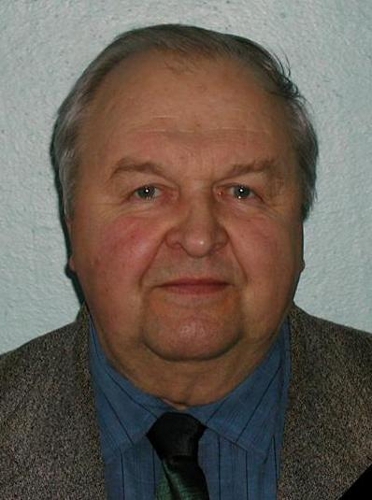 Yuri Ilyasov (Photo courtesy of Leonid Gurvits)
Yuri Ilyasov (Photo courtesy of Leonid Gurvits)
Yuri Ilyasov
Contributed by Leonid Gurvits
Yuri Petrovich Ilyasov, Professor, Head of the Pulsar Astrometry Group of the Pushchino Radio Astronomy Observatory of the P.N. Lebedev Physics Institute was born on 24 October 1933. He got his higher education at the Moscow Power Institute and joined the P.N. Lebedev Physics Institute (FIAN) of the USSR Academy of Sciences immediately after graduation in 1957. He was the first intern and one of the first employees of the Radio Astronomy Station of FIAN (at present - the Pushchino Radio Astronomy Observatory of the Astro Space Centre of FIAN) where he worked for his entire professional life and grew through the ranks to become a head of one of the leading research departments of the Observatory.
Yuri Ilyasov made a significant contribution to the establishment of experimental facilities of the Pushchino Radio Astronomy Observatory, in particular, as the developer of the dipole and feed systems of the cross radio telescope DKR-1000. He was also actively involved in completing the construction of BSA, a highly sensitive array radio telescope for meter wavelengths. He led the construction of antennas for measurements of the solar wind velocity near the cities of Pereyaslavl-Zalesski and Staritsa as well as a mobile radio interferometric antenna. In the late 1970s, Yuri Ilyasov pioneered pulsar timing experiments aimed at establishing a pulsar-based time scale. To his last days he continued to work in this area in close cooperation with many colleagues in Russia and abroad.
Yuri Ilyasov was widely known as a motivated and talented organizer. These qualities allowed him, together with the colleagues from FIAN, Special Design Bureau of the Moscow Power Institute and Radio Physics Research Institute to develop and enact one of the largest scientific facilities in Russia – the radio telescope RT-64 near the city of Kalyazin in Tver region.
For many years, Yuri Ilyasov led the Antenna Section of the Council of Radio Astronomy of the Academy of Sciences. More recently he was the chairman of the Section on Radio Telescopes and Methods of the Council of Astronomy of the Russian Academy of Sciences.
Yuri Ilyasov was a devoted teacher and supervisor of young researchers. He was a Professor at the Moscow State University, where he taught radio astronomy courses and supervised graduate and post-graduate studies.
Yuri Ilyasov co-authored about 120 scientific publications and two monographs, edited translations of two books on radio astronomy from English to Russian. Since 2009, he was a member of the Working Group on History of Radio Astronomy of the Division X of the International Astronomical Union.
Yuri Ilyasov died on 10 August 2010.
Modified on Tuesday, 09-Aug-2011 14:10:23 EDT by Ellen Bouton, Archivist (Questions or feedback)
|
![[IAU logo]](iau_wb_thumb.jpg)
![[URSI logo]](URSI-logo-thumb.jpg)
![[Karl Jansky at his antenna]](jansky_photo_02_thumb.jpg)
![[Reber's Wheaton antenna]](Reber_Telescope_Wheaton_thumb.jpg)
![[Dover Heights]](Dover_Heights_02_thumb.jpg)
![[4C telescope]](GB61-195_4C_telescope_thumb.jpg)
![[Ewen and horn antenna]](ewen_horn1s.jpg)
![[Dwingeloo, 1956]](Dwingeloo-1956-thumb.jpg)
![[Jocelyn Bell Burnell and Cambridge antenna used in pulsar discovery]](burnell2_thumb.jpg)
![[Lovell Telescope at Jodrell Bank]](site_1594_0001-500-334-20180316163019-thumb150.jpg)
![[Wilson, Penzias, and Bell Labs horn antenna]](wilson-penzias-horn_thumb.jpg)
![[6-m Millimeter Radio Telescope in Mitaka, Japan]](6m-thumb.jpg)

